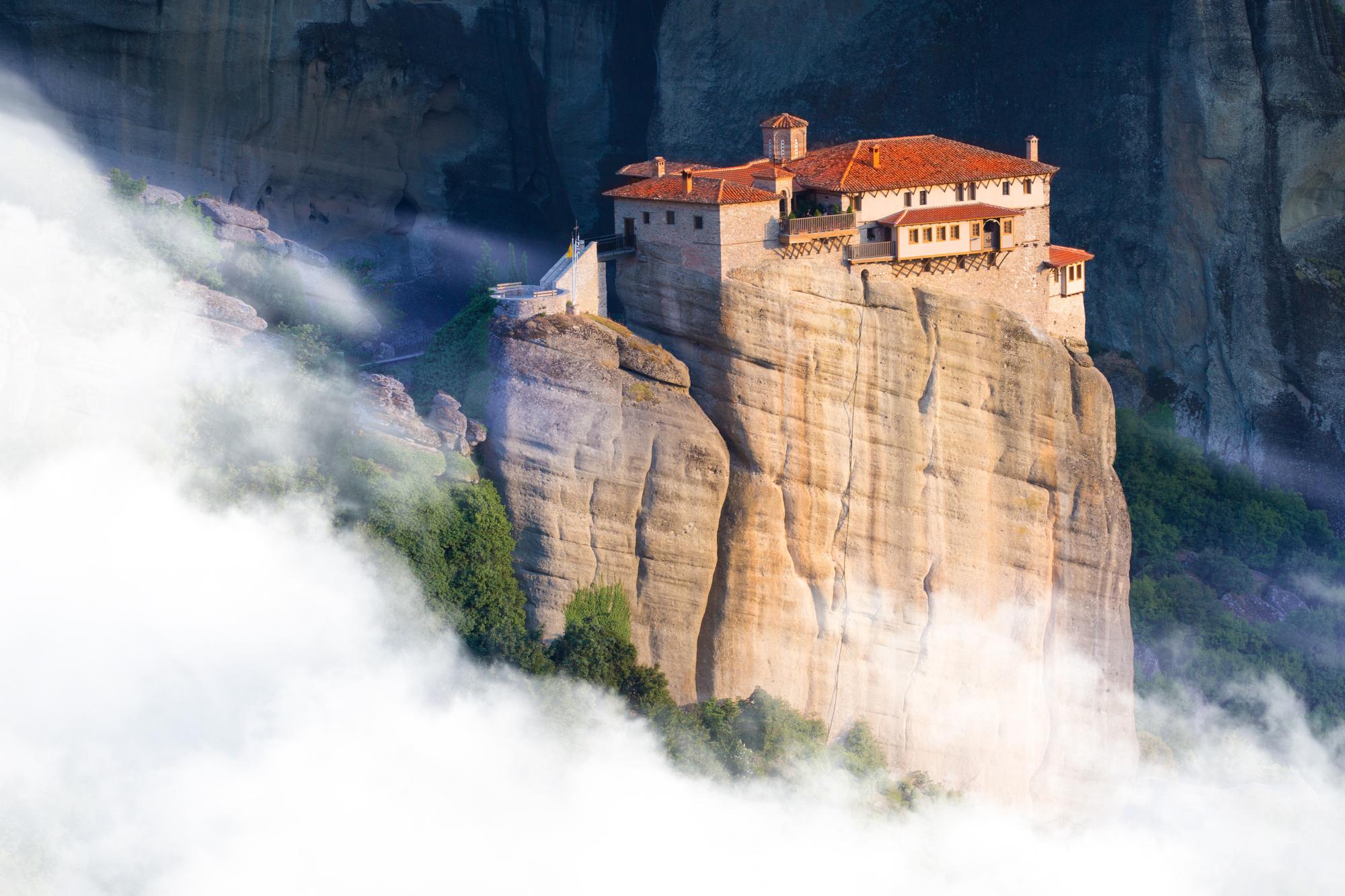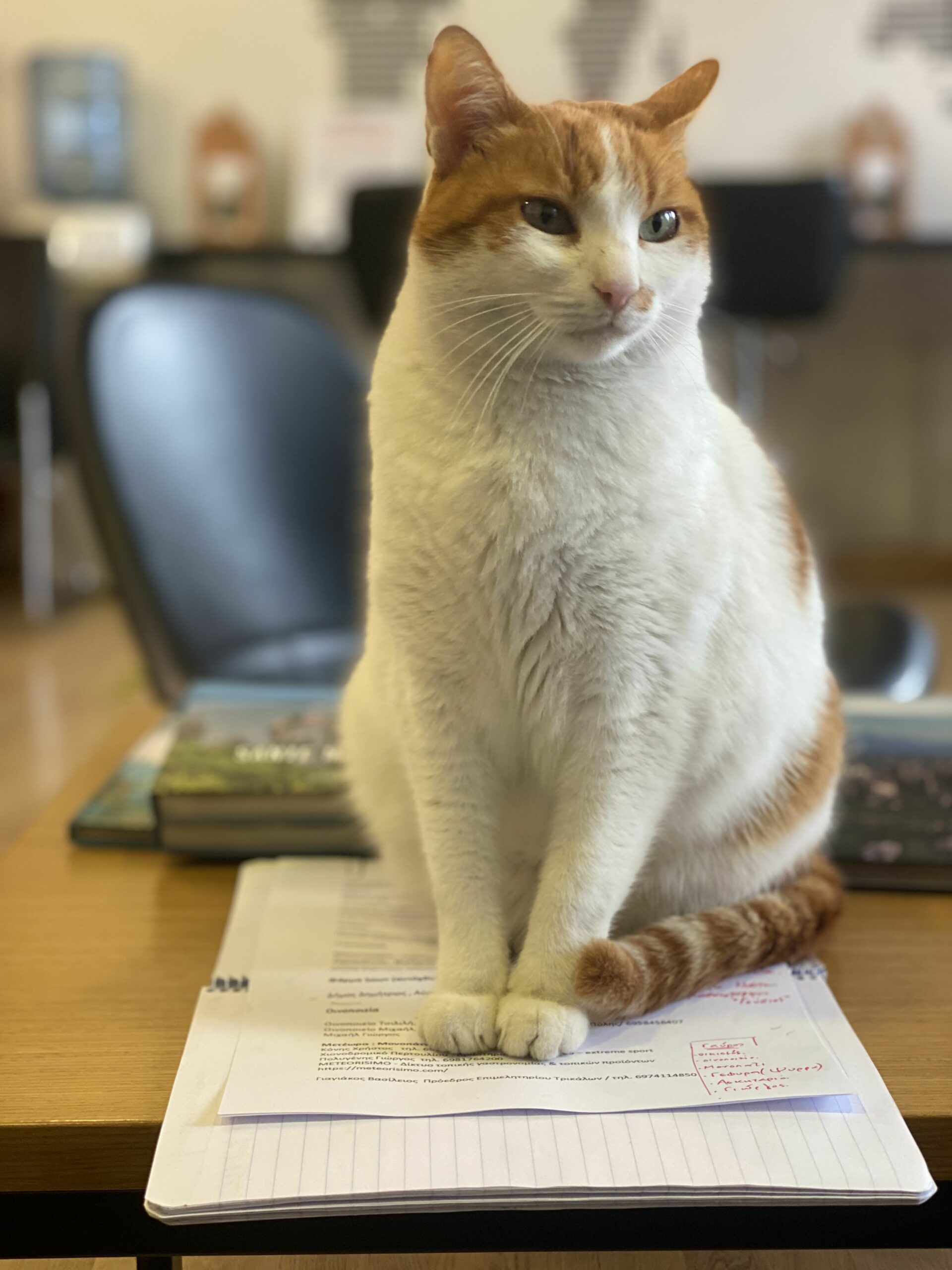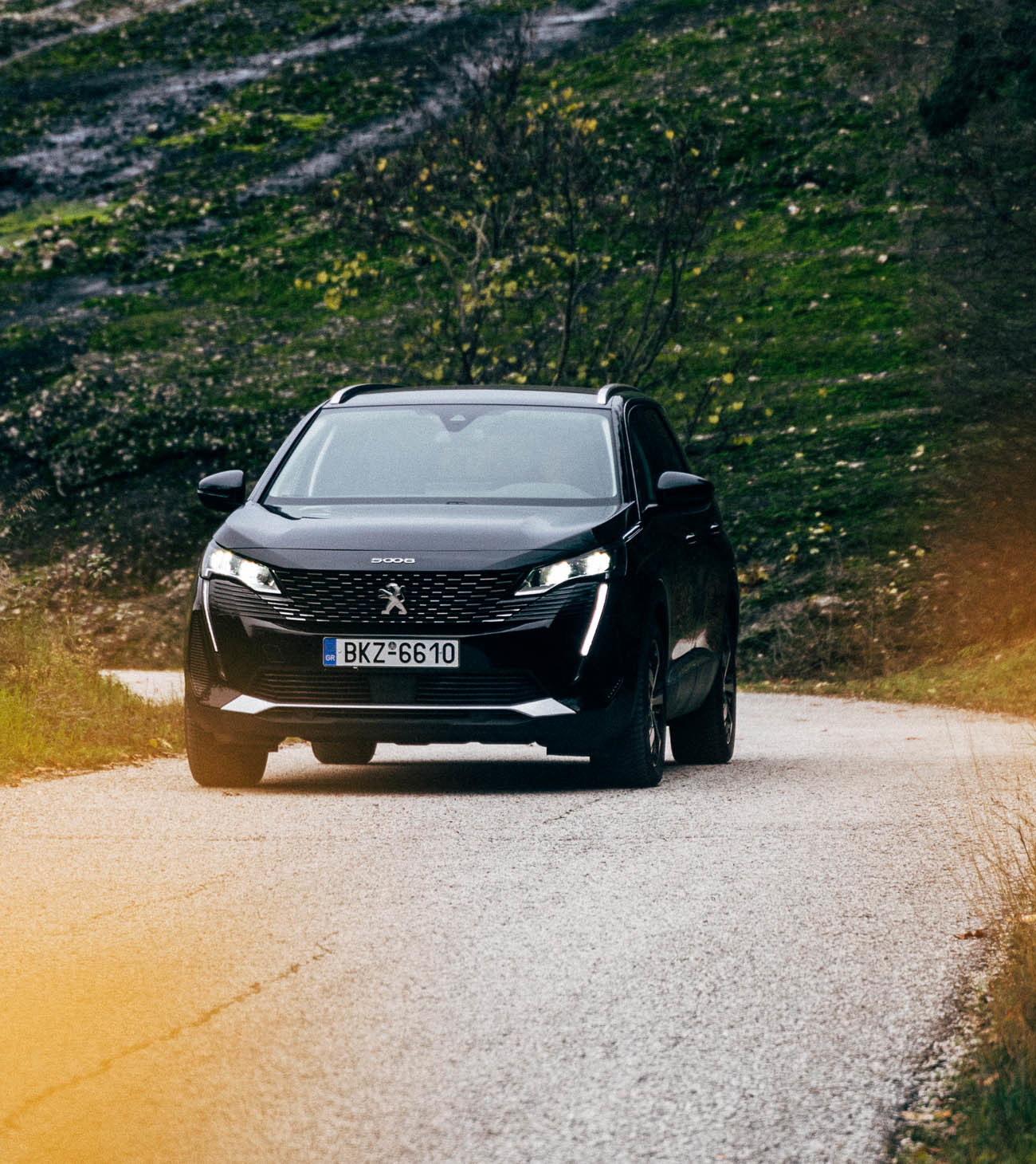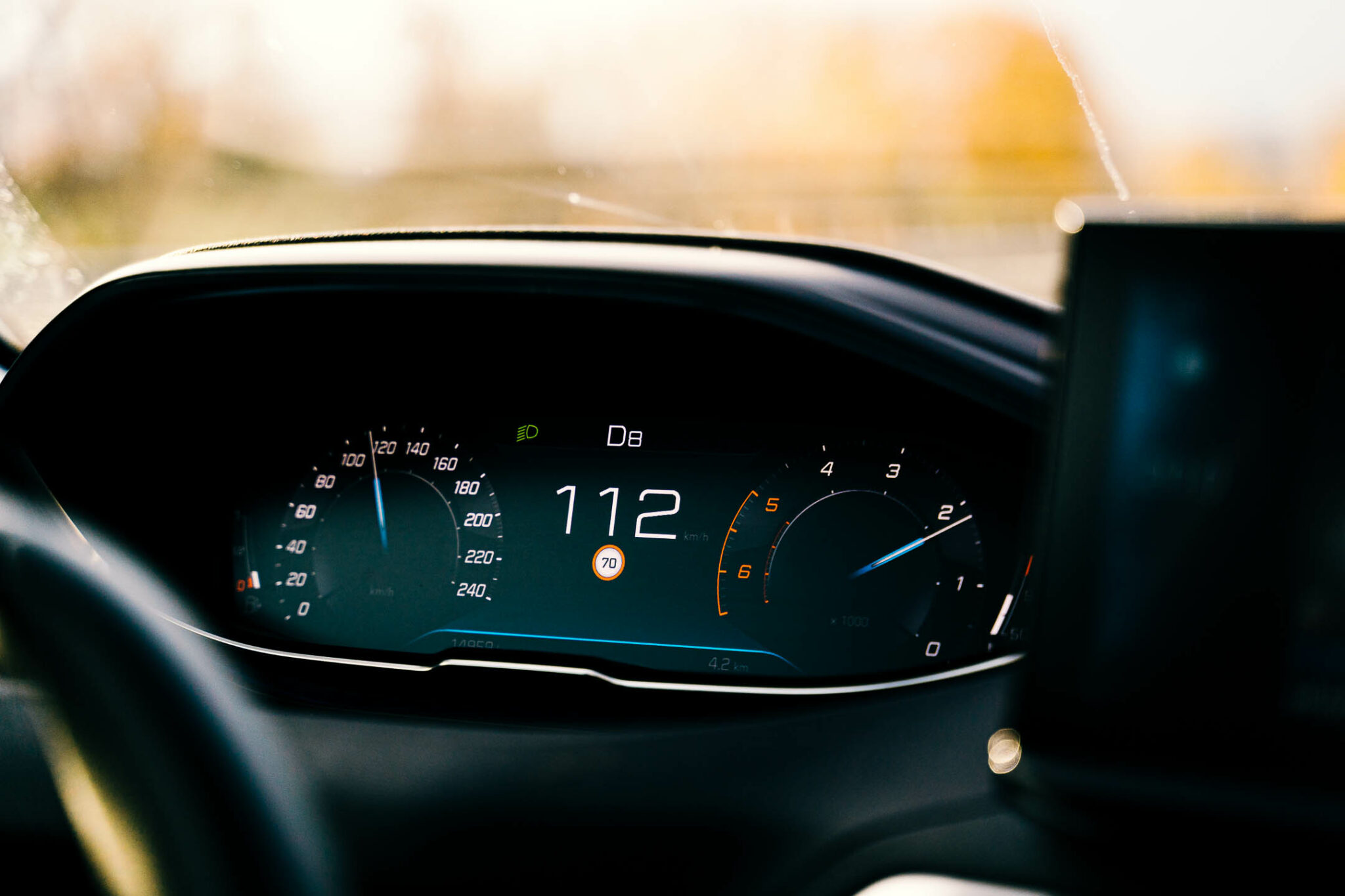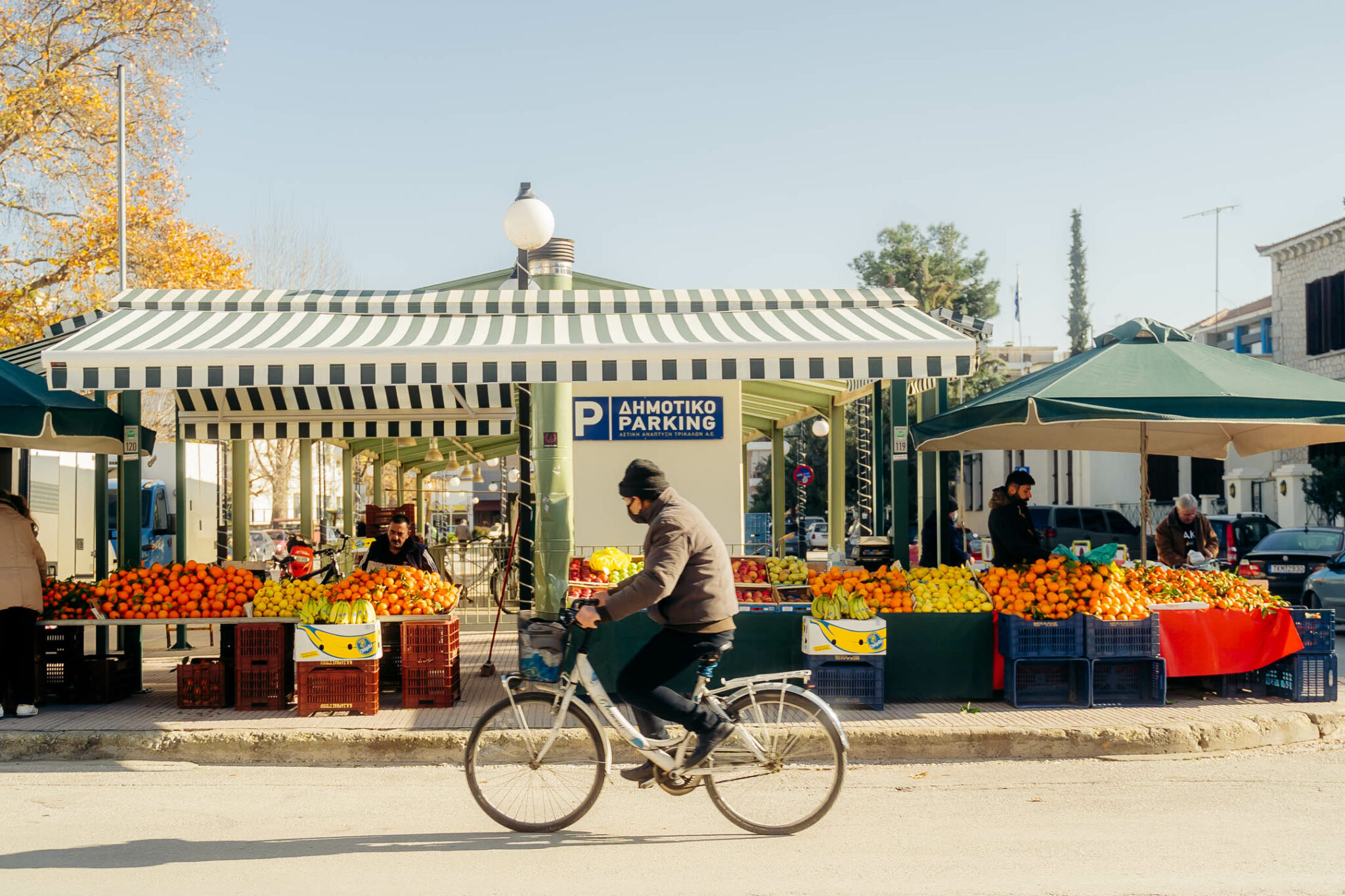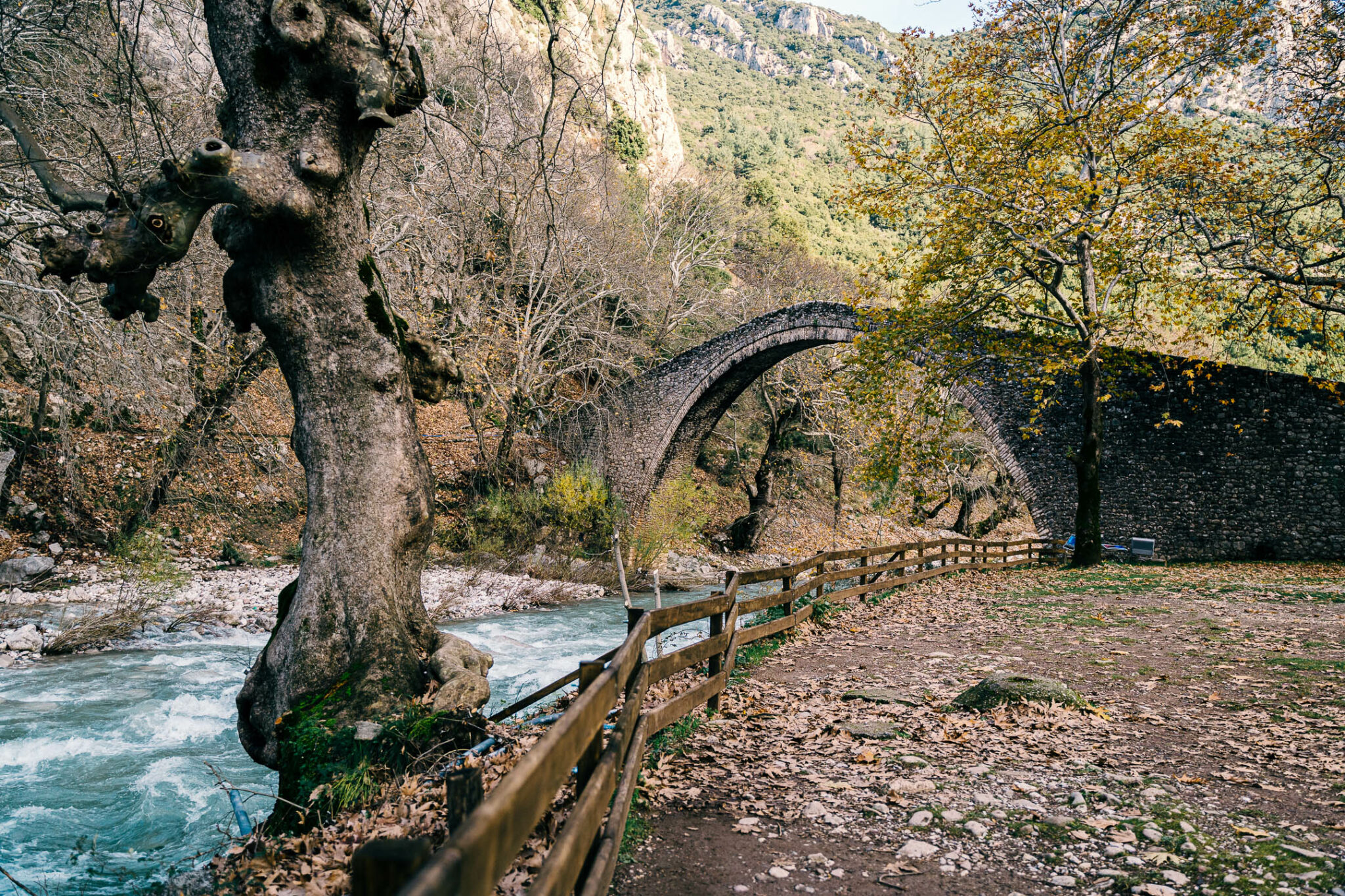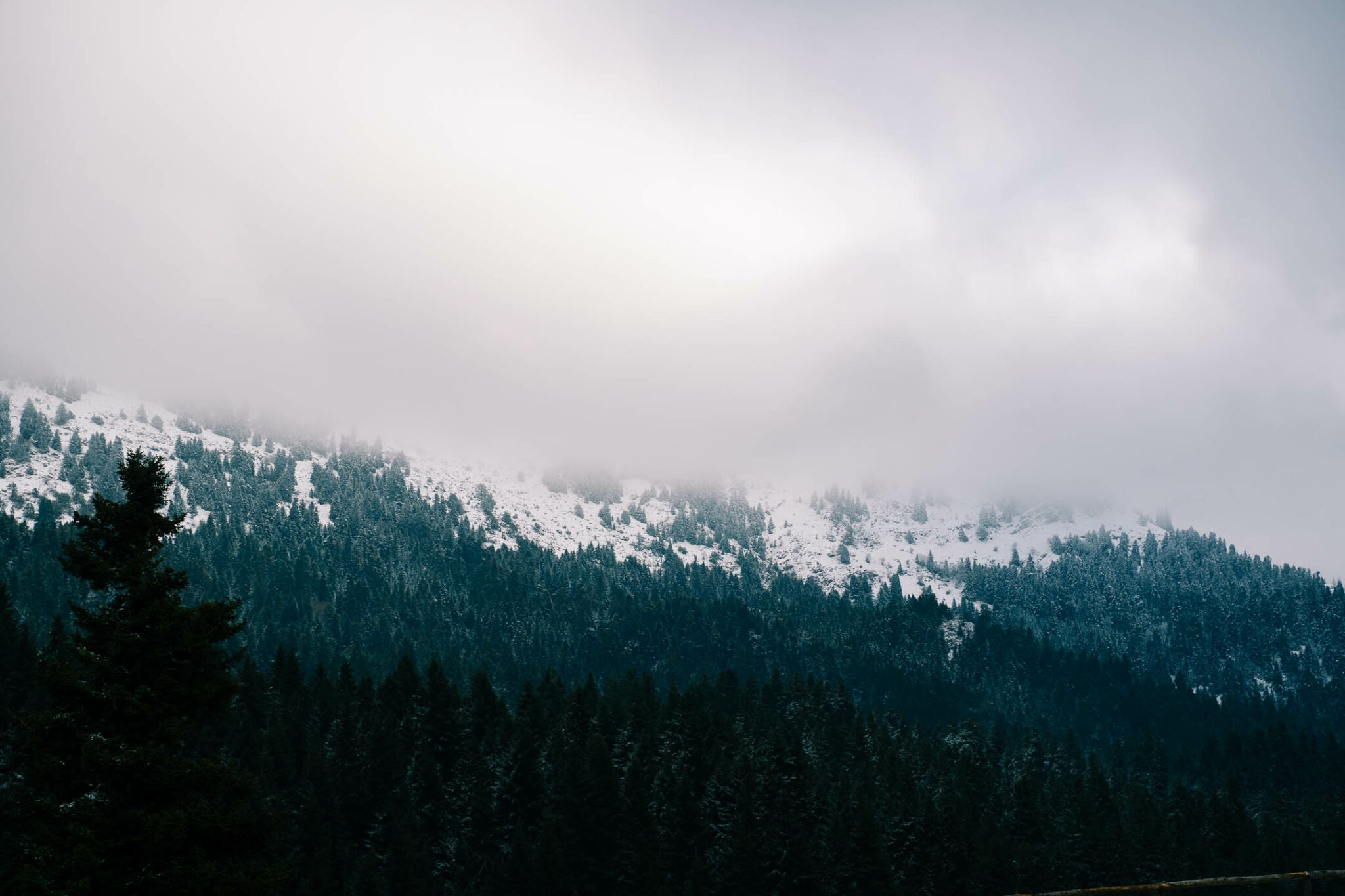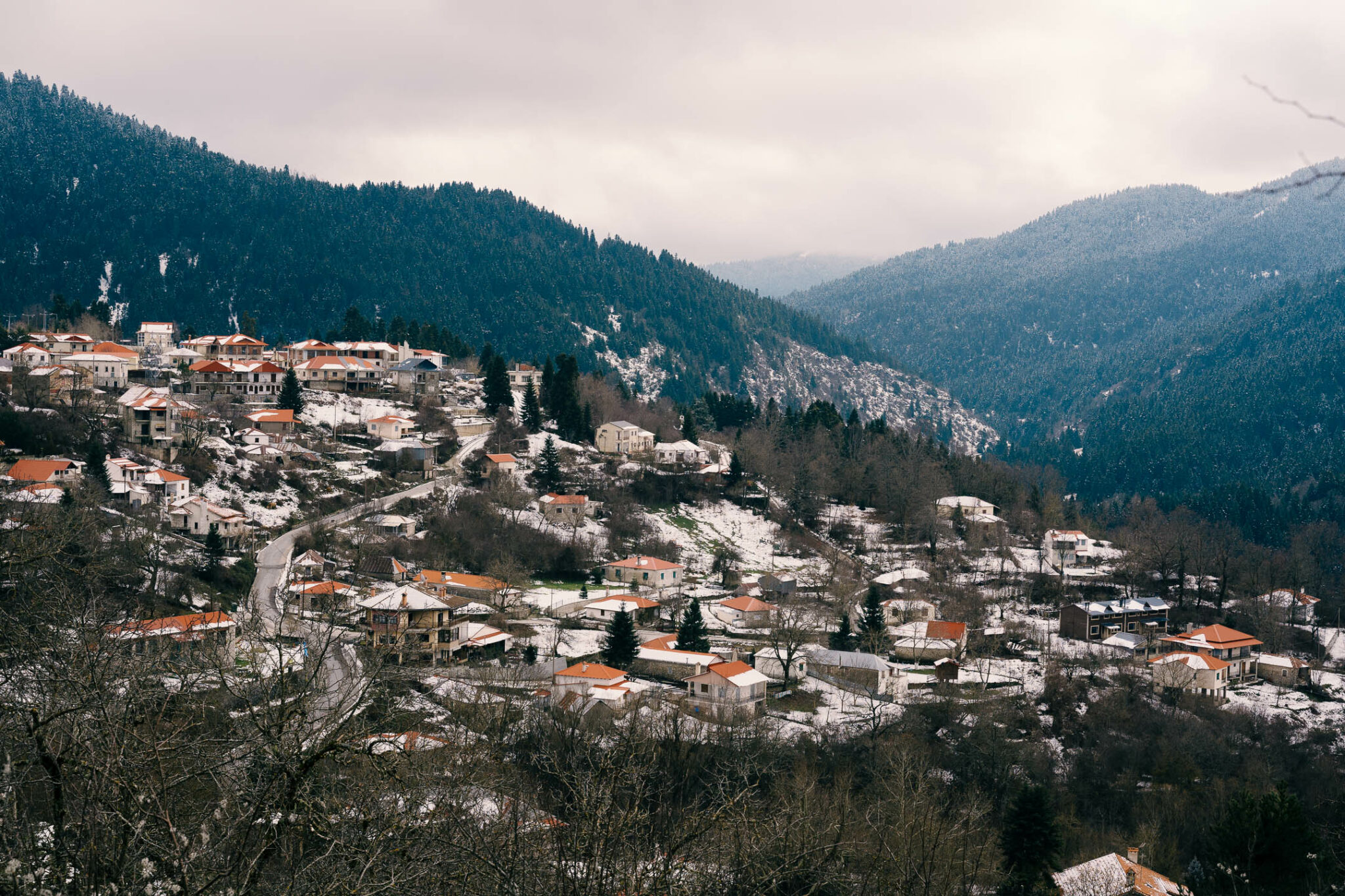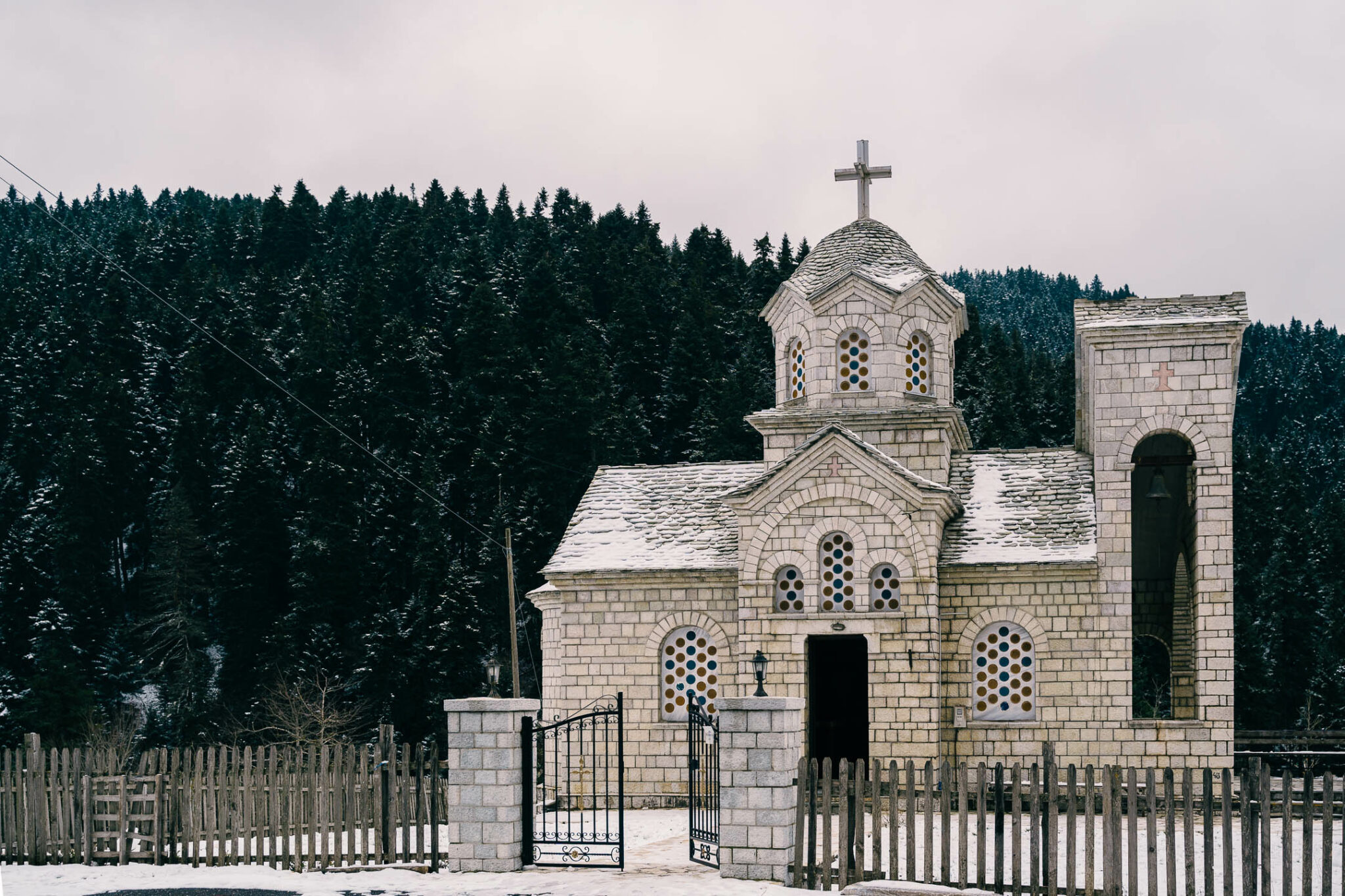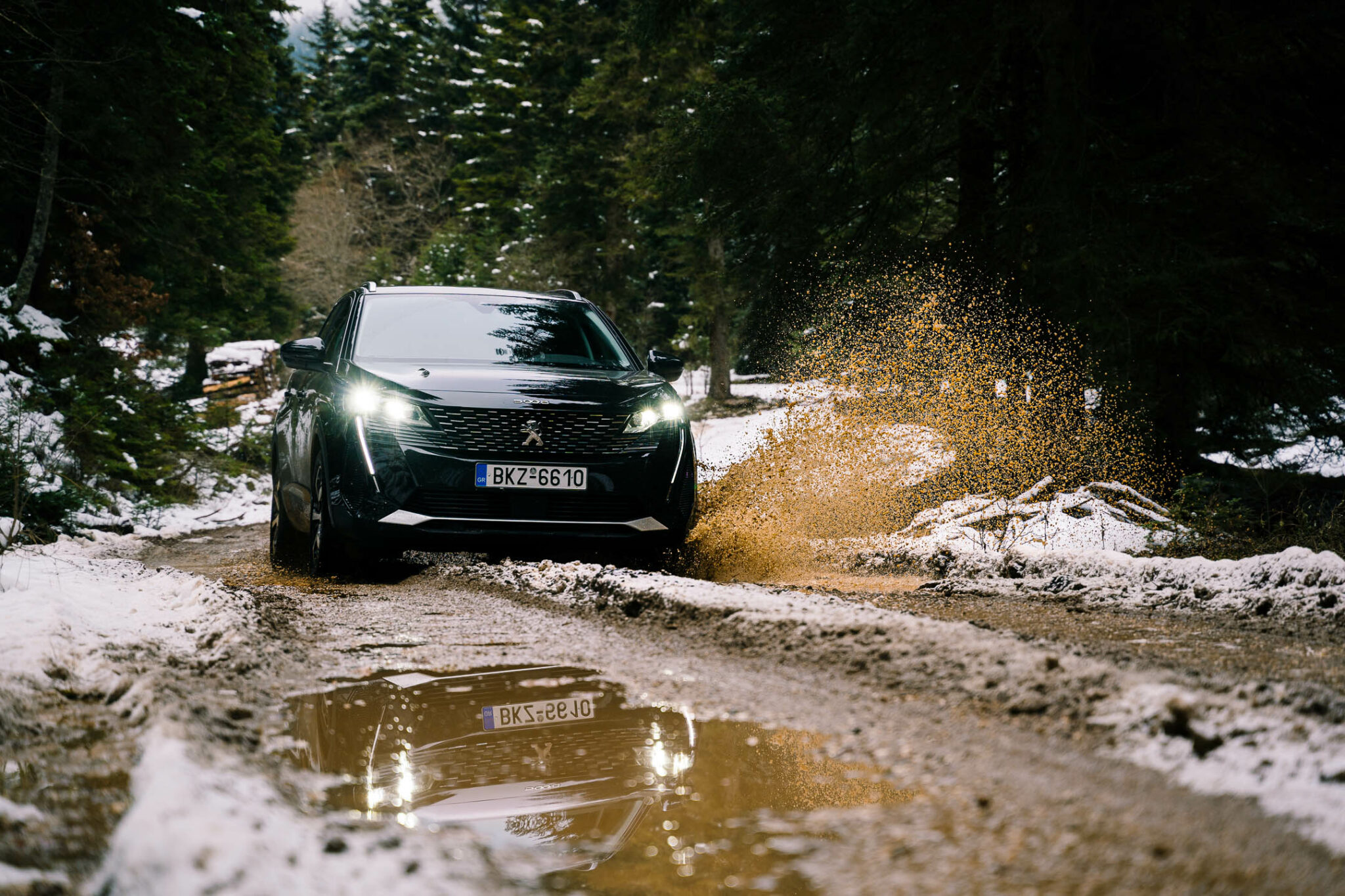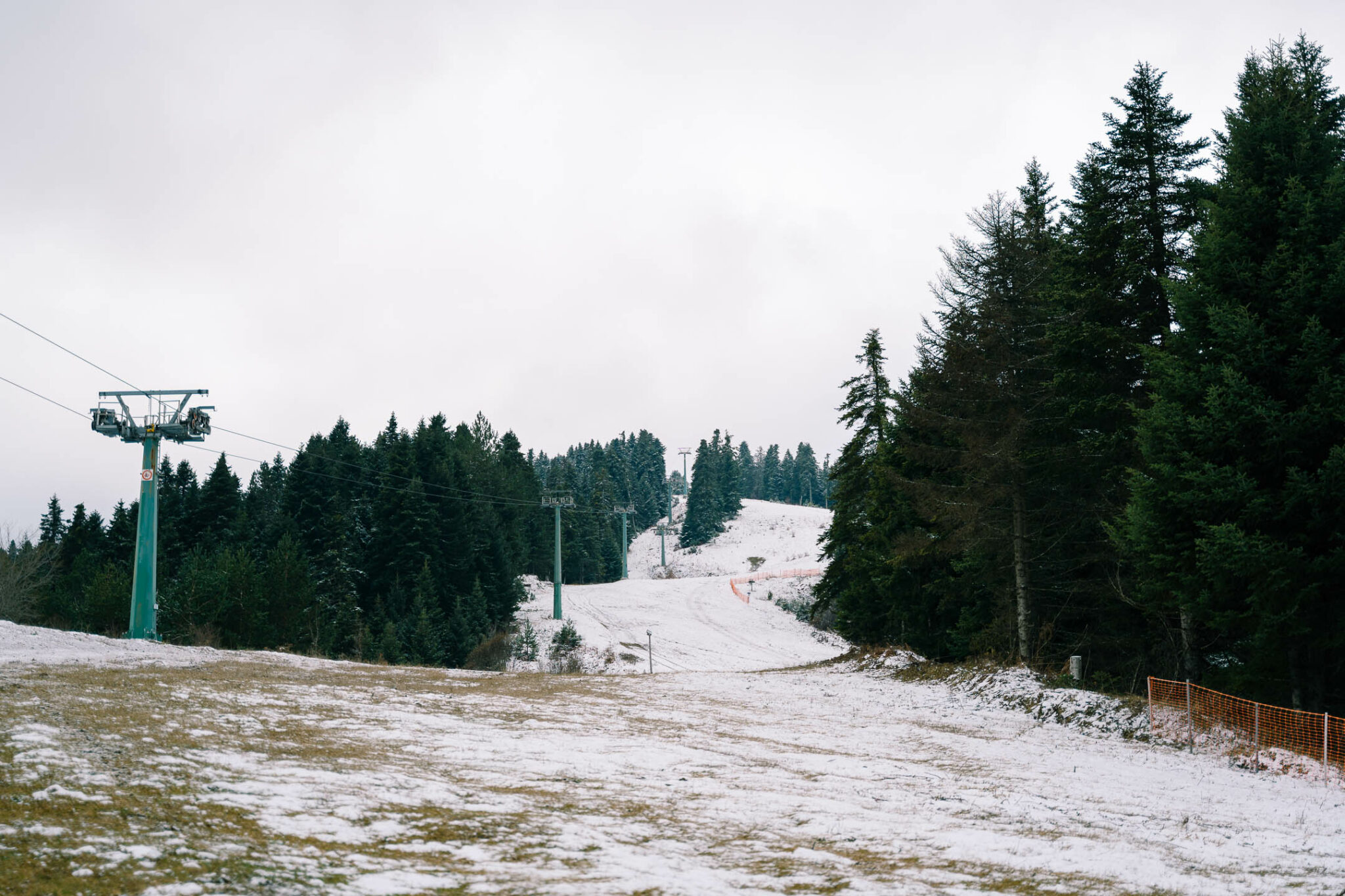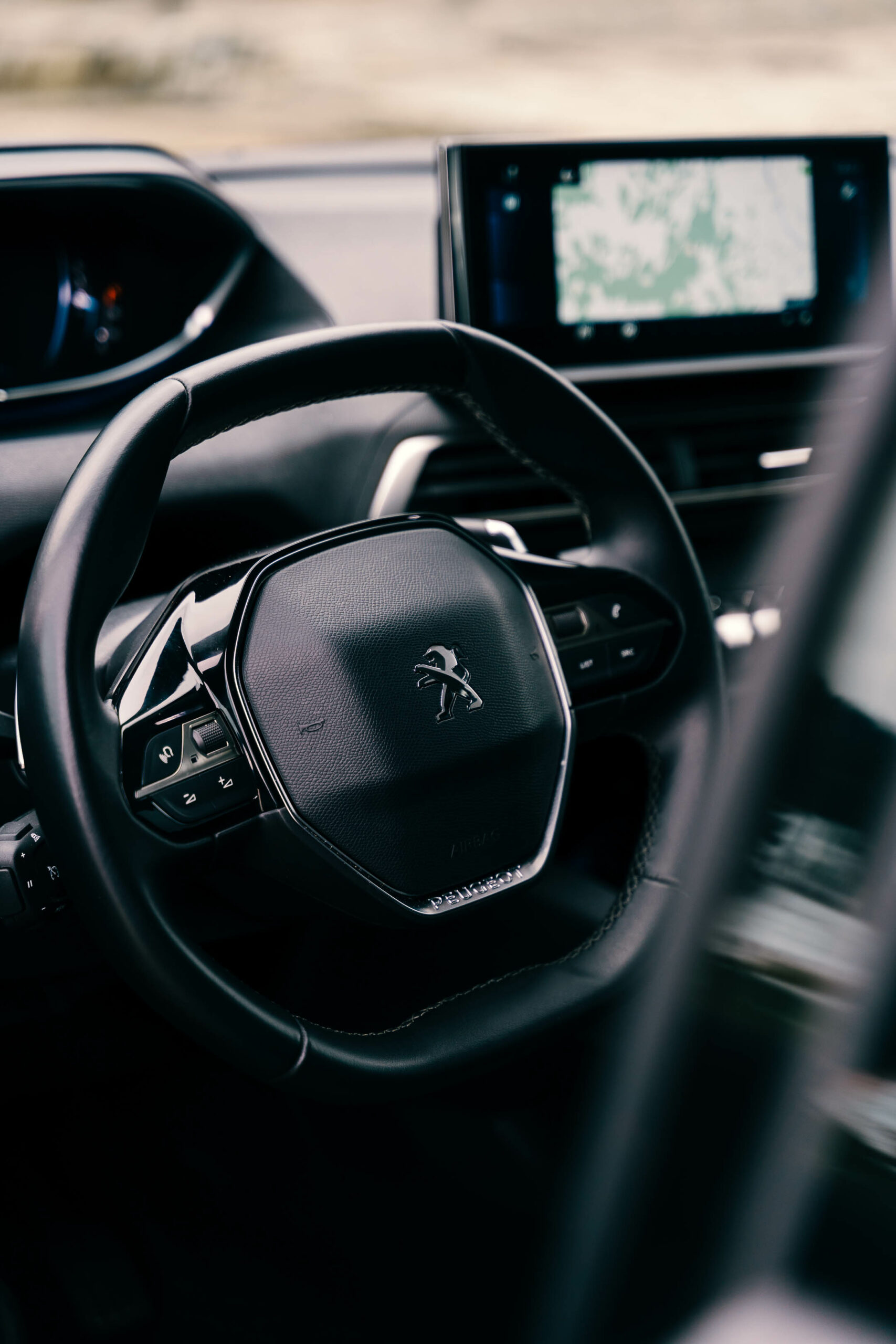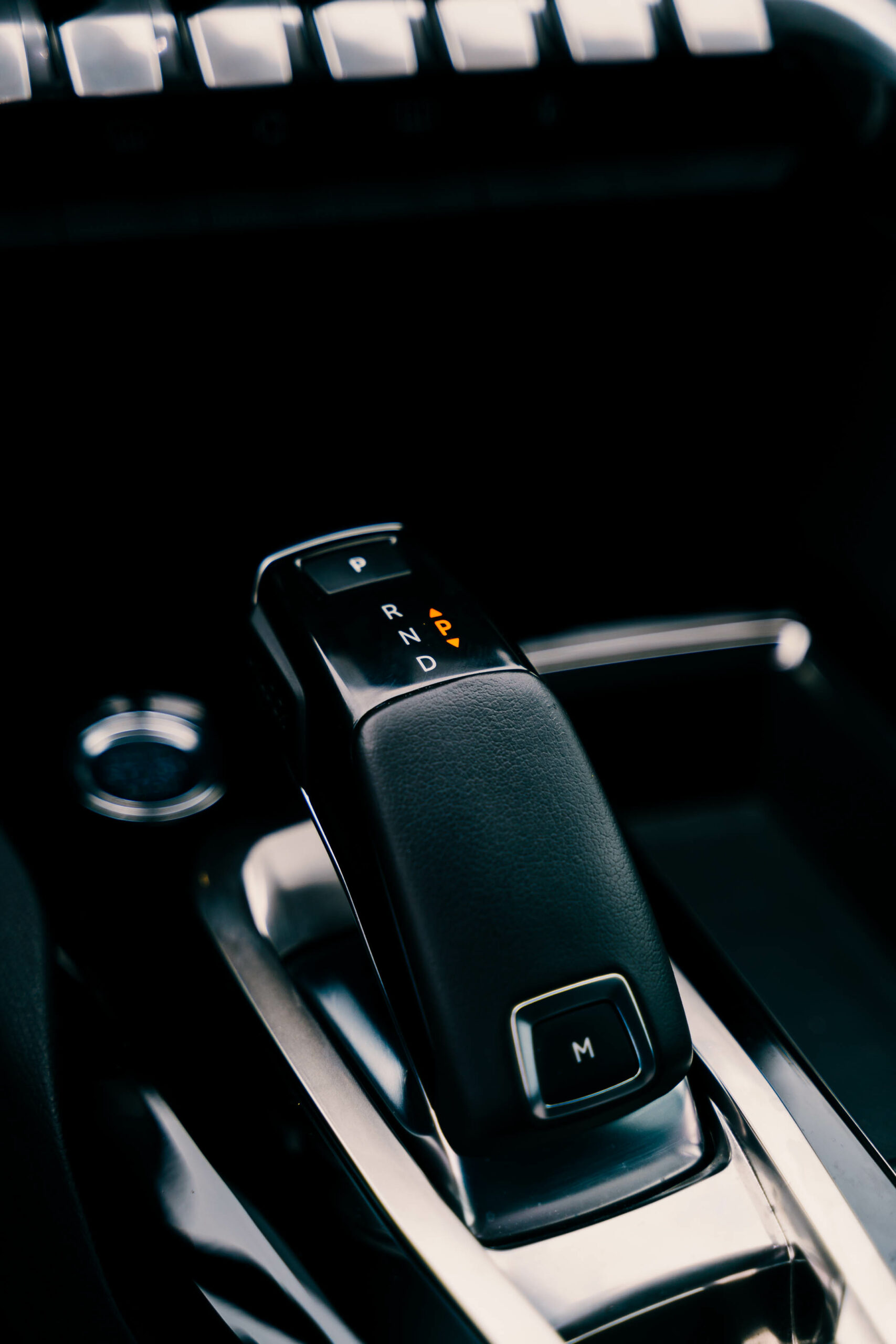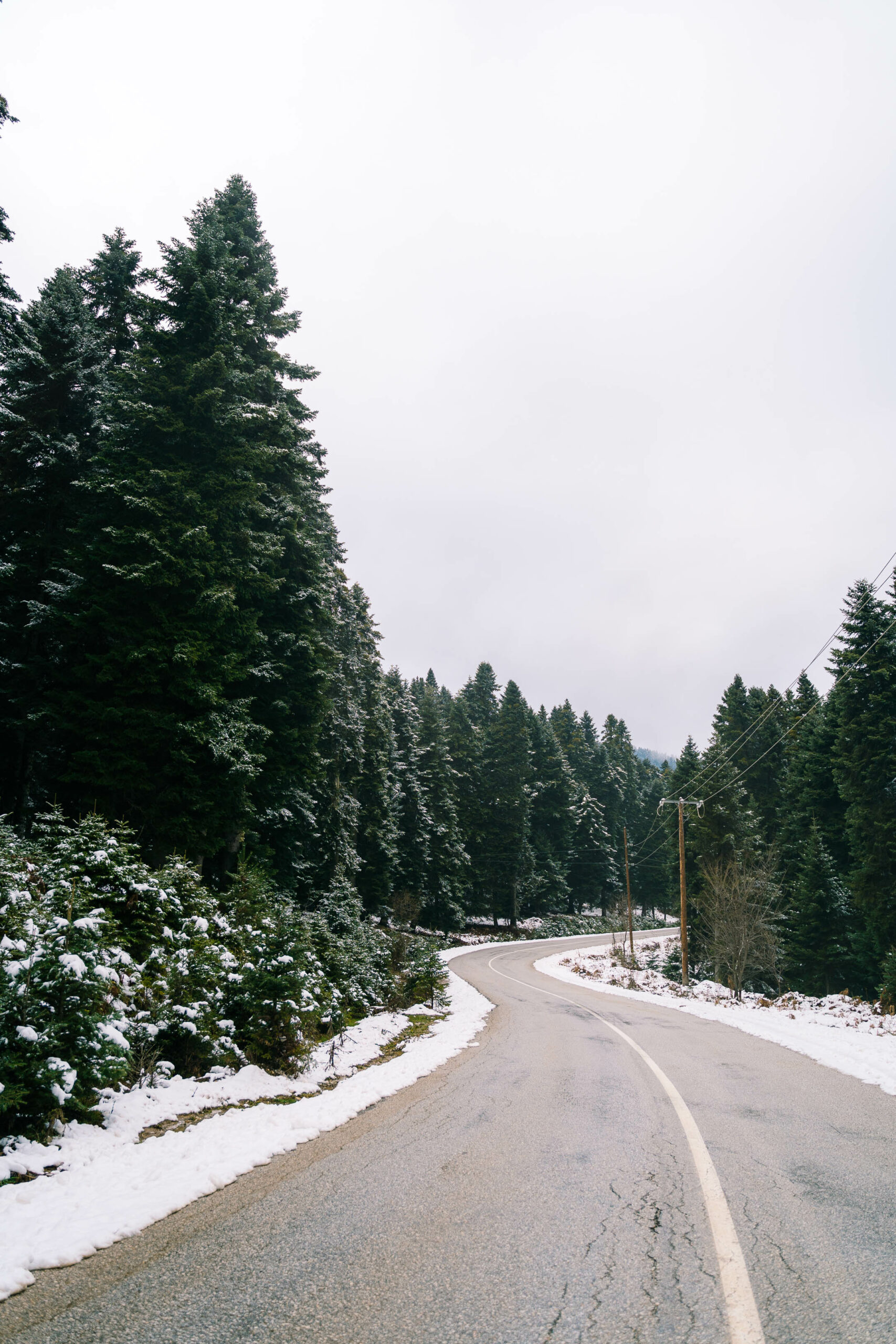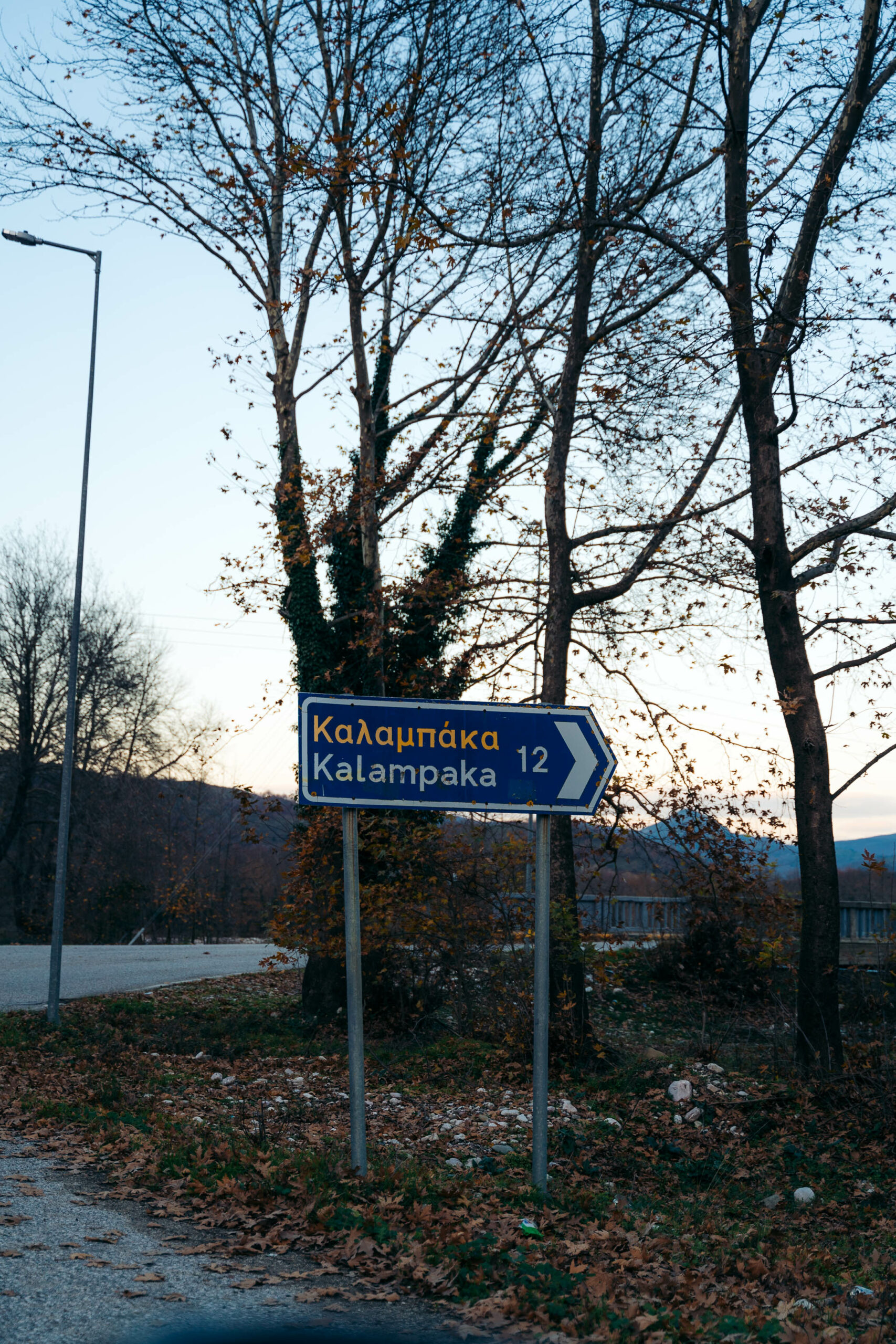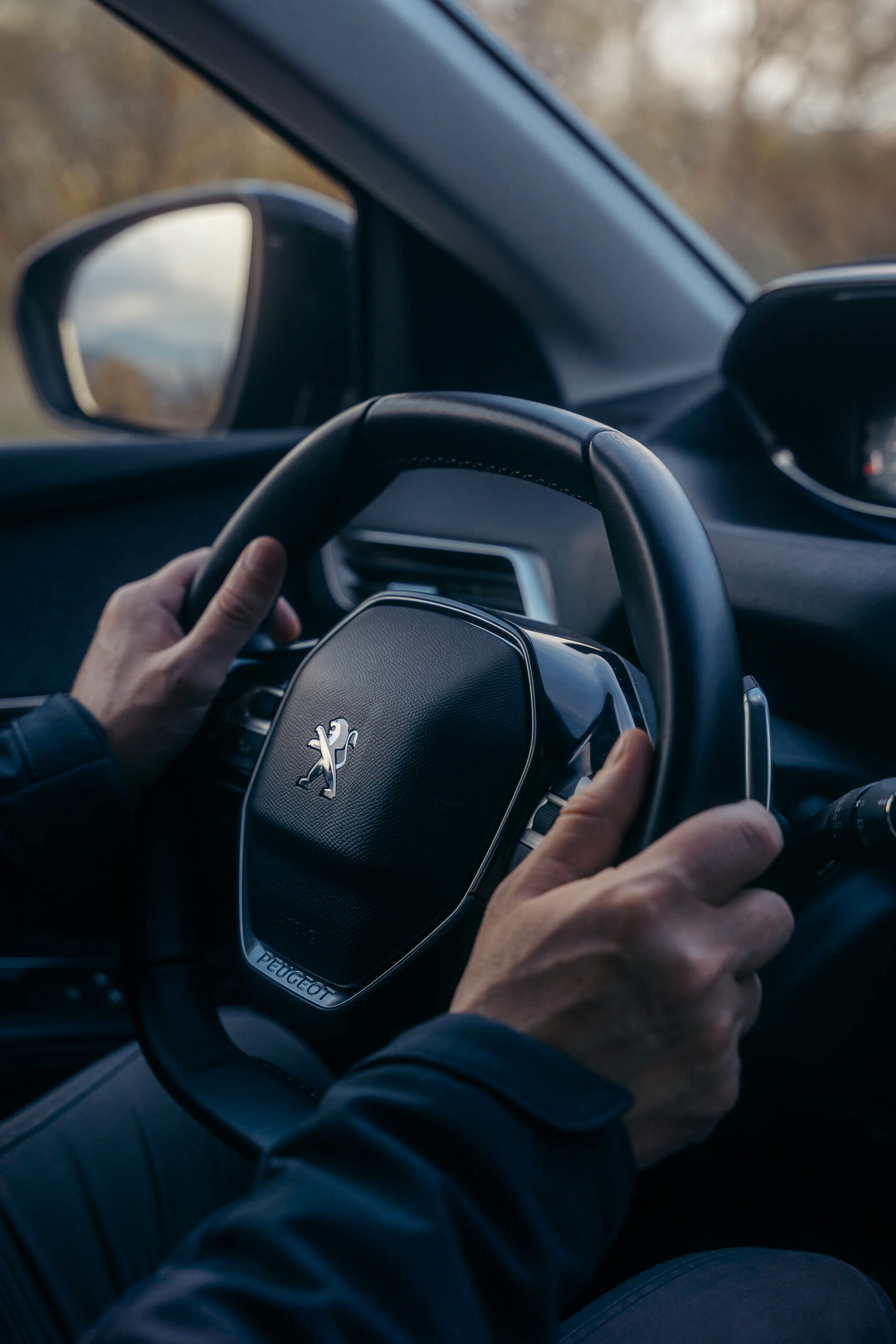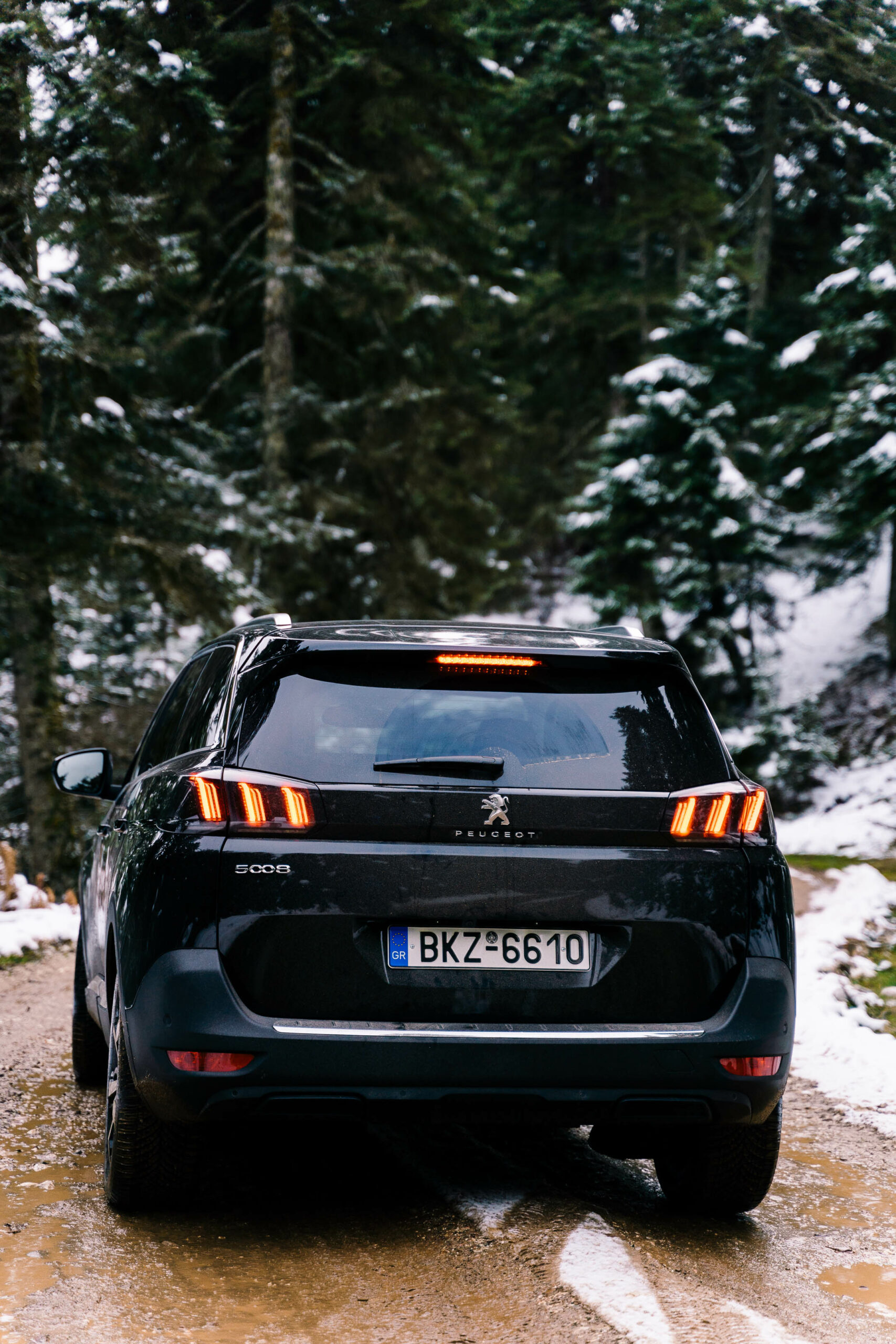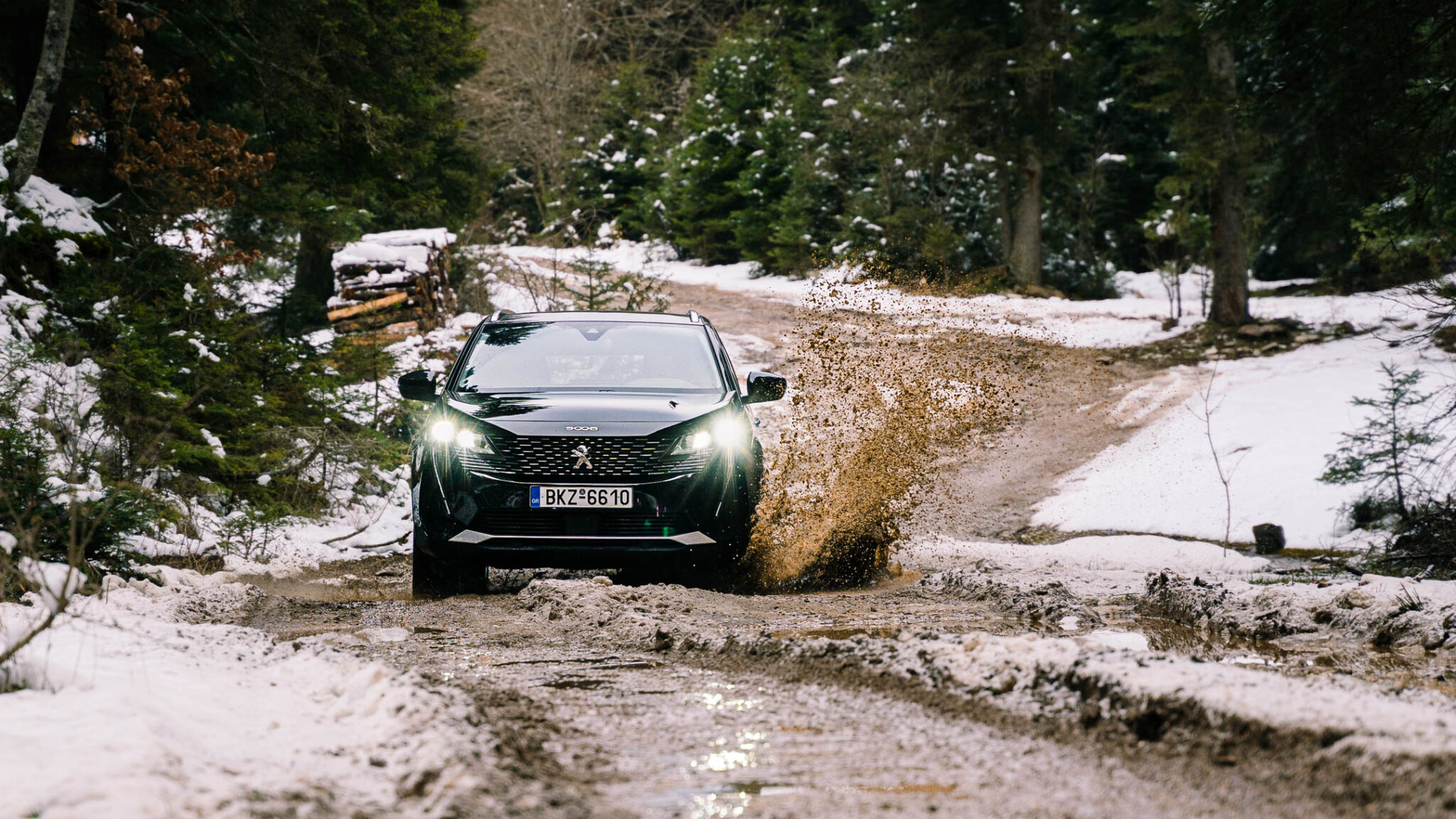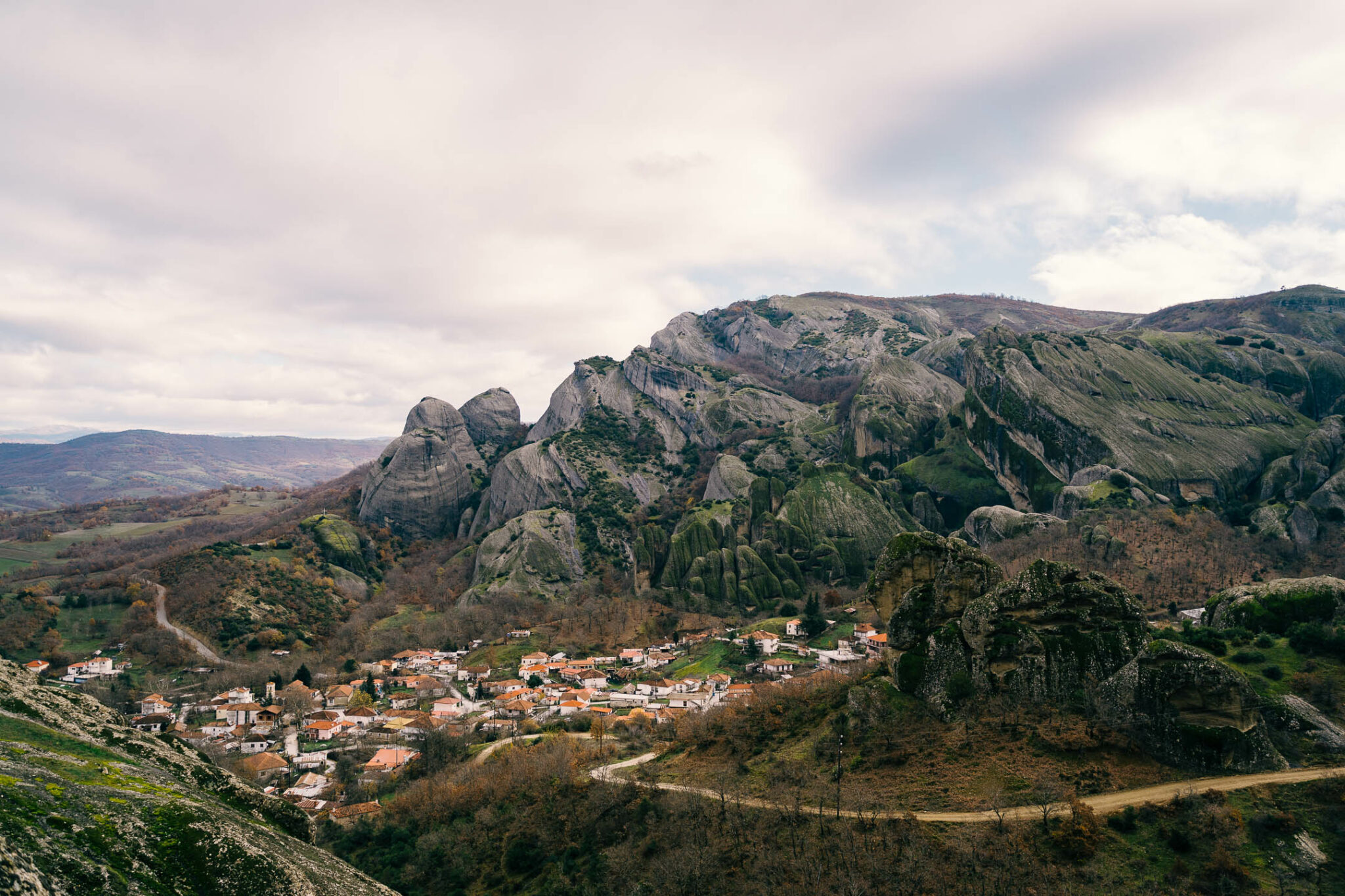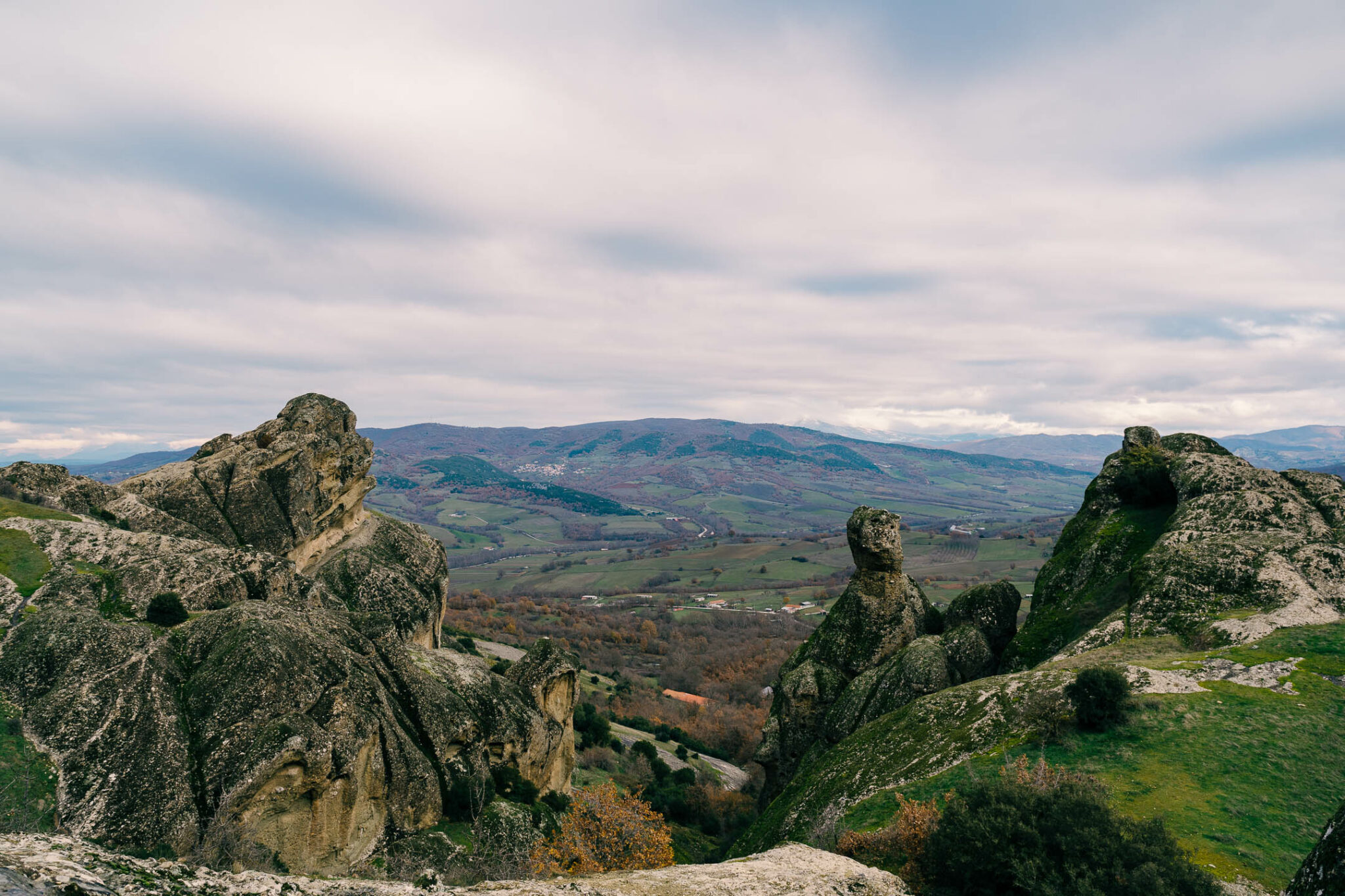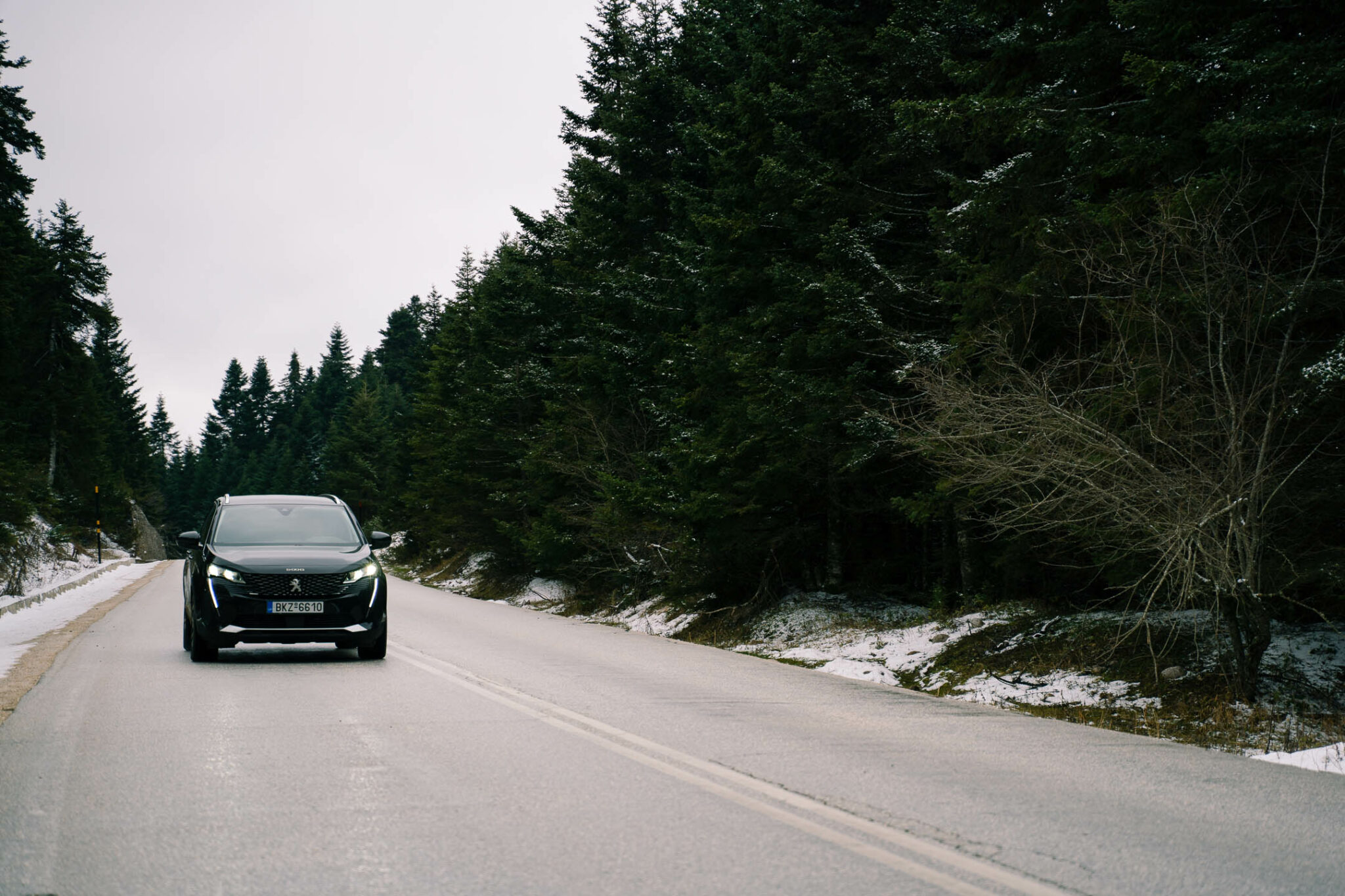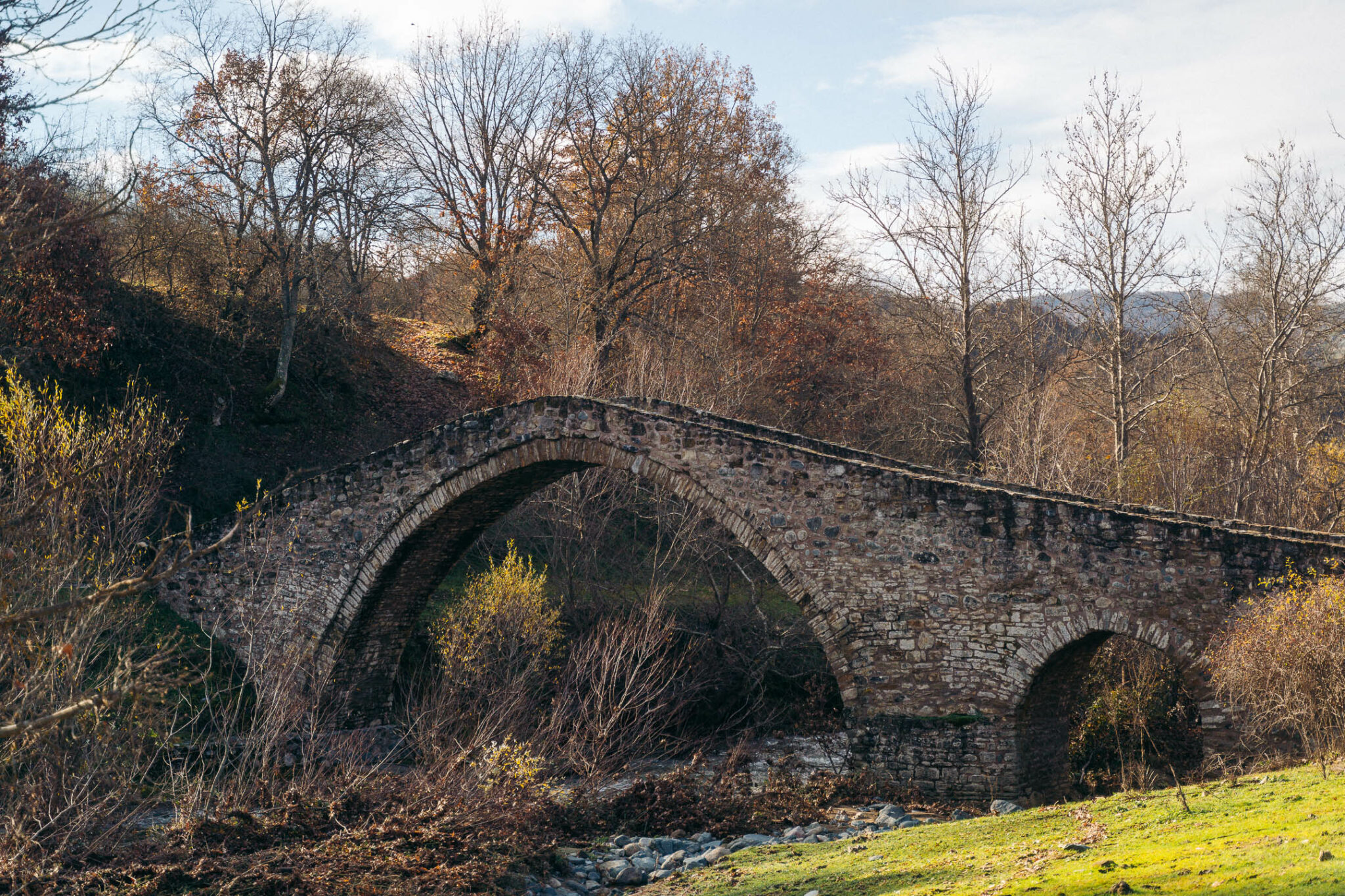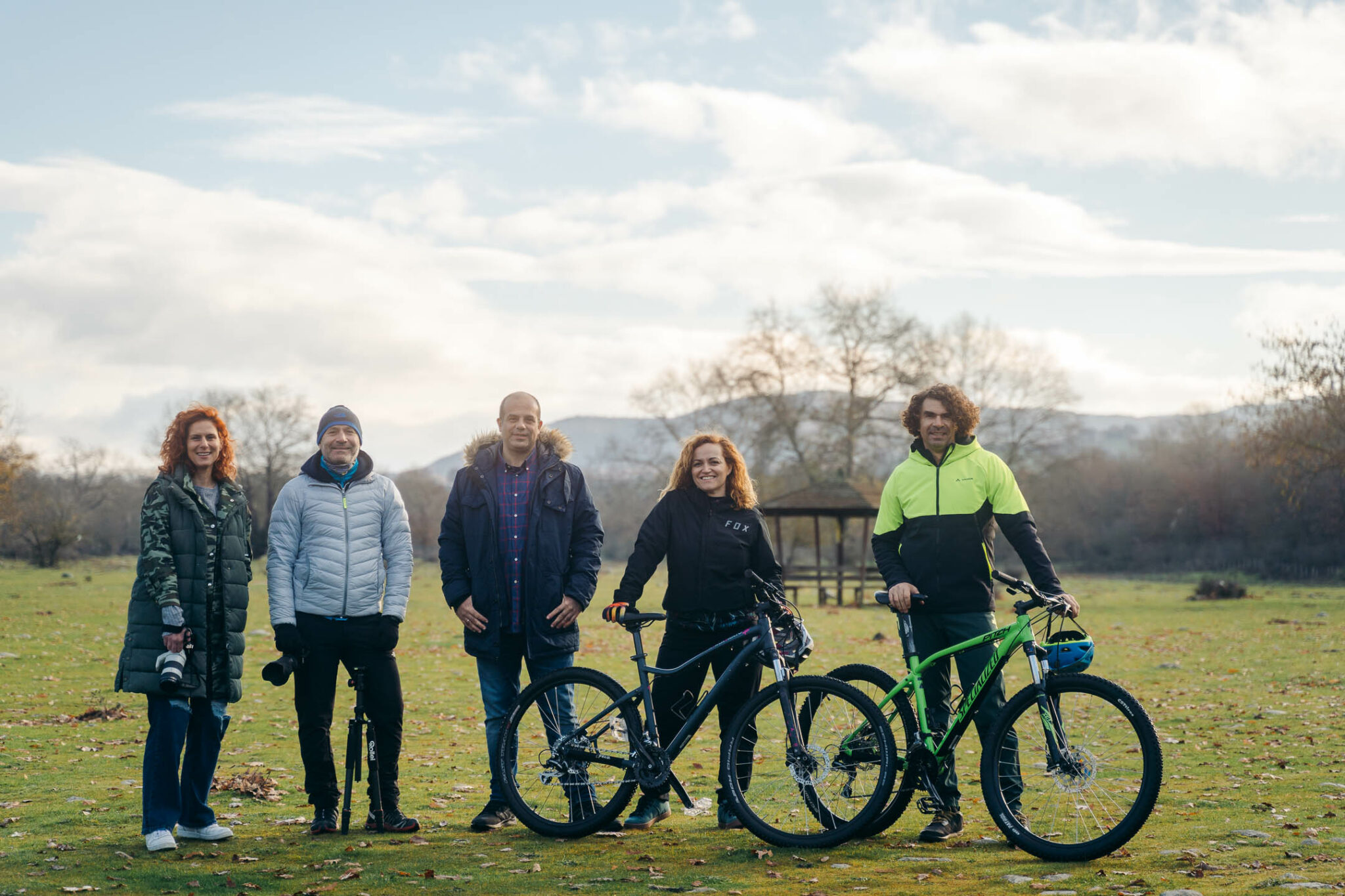It’s almost six in the morning, a Monday somewhere in the middle of December. The journey to the wider region of Trikala has just begun.
The night before I was searching the internet for more information about the rocks of Meteora, about their formation, and about life there hundreds of years ago. I wanted to dig up information about Trikala, about Pertouli, about the ski resort and so many other beautiful parts of this place. As Amalia and I drive down the highway, she tells me she did the exact same thing the night before. “I think I’ve zeroed in on a few places I want to go for some shots,” she tells me, while simultaneously connecting her mobile phone to the multimedia system of the Peugeot 5008, the car whose comfort and safety will be our companion on this trip. She puts on some music. It’s dawning.
Just like that, with our coffees in two of the many cup holders our “companion” features to make the journey even more comfortable, the miles fly by. We have entered “Meteora” as our final destination in the car’s navigation system and, to be honest, I keep myself from clicking on the zoom out of the map to see which of all the geological formations it will take us to. From the steering wheel controls, I’ve set the i-cockpit to display the map there too, while some nice graphics inform us about points of interest on our route.
The awe in front of the rocks of Meteora
We pass by the outskirts of Trikala, the weather is clear and the rocks of Meteora, which have been included by UNESCO in the world cultural heritage list, are already looming in front of us. Every time I’m here, I remember the first time I saw them almost twenty years ago. As you get closer and realize their size, you always feel the same awe. And how could you not feel it when this landscape is one of the rarest and most special on the planet.
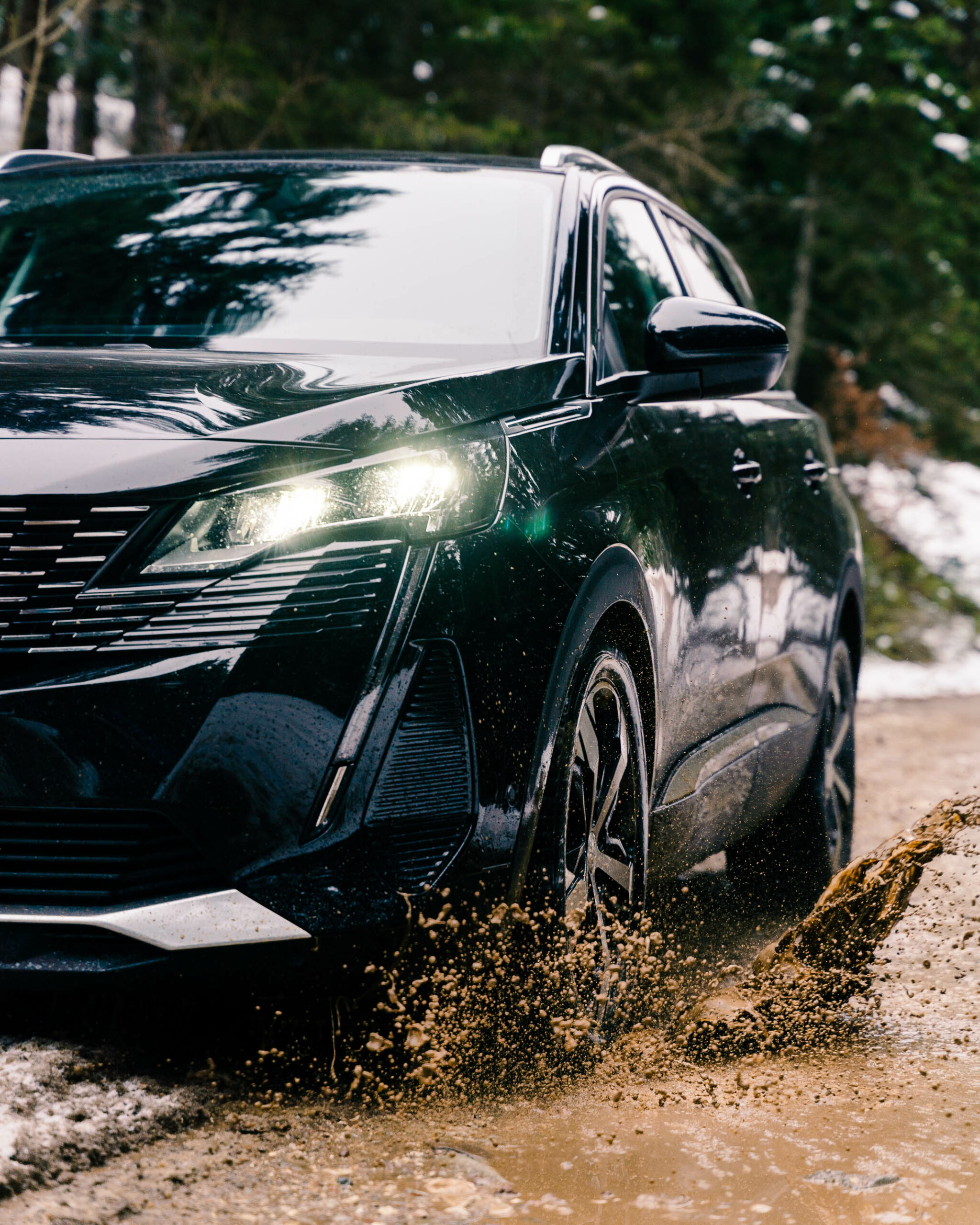
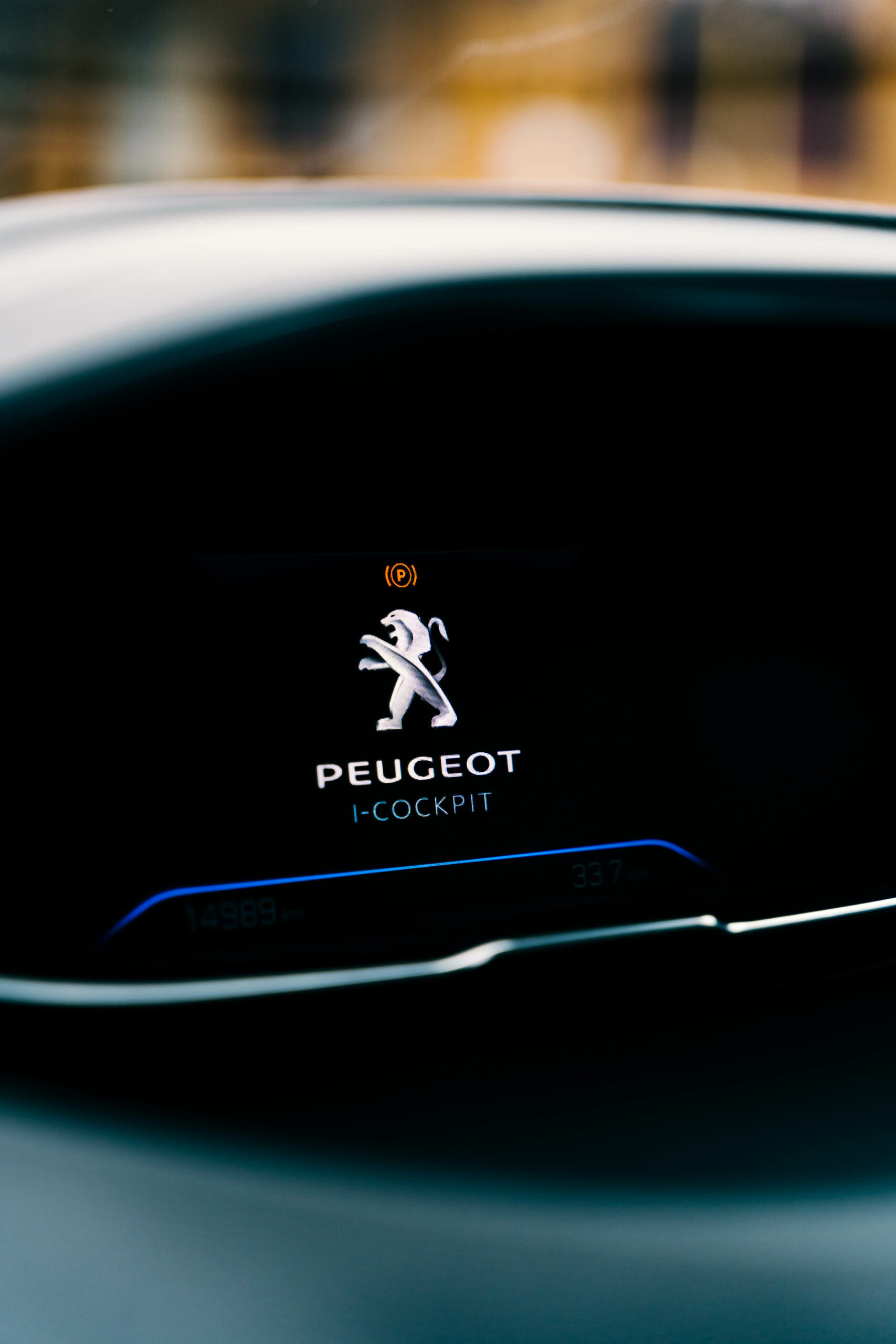
We bypass the centre of Kalambaka and head towards Kastraki and soon we find ourselves driving our Peugeot 5008 through this unique complex of rocks. We simply take a whiff, but we are definitely ready for a few days full of beautiful images, experiences and meetings with people who, based on some research we have done, have turned their love for their land into great work.
The formation of Meteora
But, how was this unique geological phenomenon was formed? What was it that contributed to us being able to enjoy this extraordinary sight today? These formations were created almost 30 million years ago, when the Thessalian plain was covered with water – it was part of the sea. The strong currents that were created pushed huge amounts of rocks and sediments, creating large formations on the sea floor. Then, the great earthquakes that occurred induced an uplift of Thessaly, resulting in the creation of an opening in the Vale of Tempi and the waters that had been trapped there until then found a way out into the Aegean. The rocks were now visible. Obviously not exactly as we see them today, as over the millennia, extreme weather events such as glaciers, strong winds and high temperatures have caused a series of significant erosions and changes, giving us this result today.
Our cat, Toula
After a first look and a few first clicks with a view of the monasteries and the steep cliffs, we return to Kalambaka. There, in the city centre, I remember from my last time here, is located the space of VisitMeteora, where George Kourelis is waiting for us, a man who deeply loves his homeland and who, together with his family, decided to engage in tourism, organizing authentic experiences in unique places of the region. “Obviously Meteora is the focus and the reason why people from the US, Australia and even New Zealand come here,” he will tell us during our meeting in his office. I sit comfortably on the black sofa, facing the graphic representation of the globe, and, with George’s valuable help, we plan our next steps. Toula is VisitMeteora’s mascot; a beautiful and friendly cat who has its own daily schedule, regardless of the office’s bustle. So, at some point Toula decided that she would rest at my feet, which of course I couldn’t refuse her. In fact, our love for Toula was such that a few days after, we stopped by the office to say goodbye to her. It couldn’t have been otherwise with Amalia in the car, who I think took more photos of Toula than of Meteora.
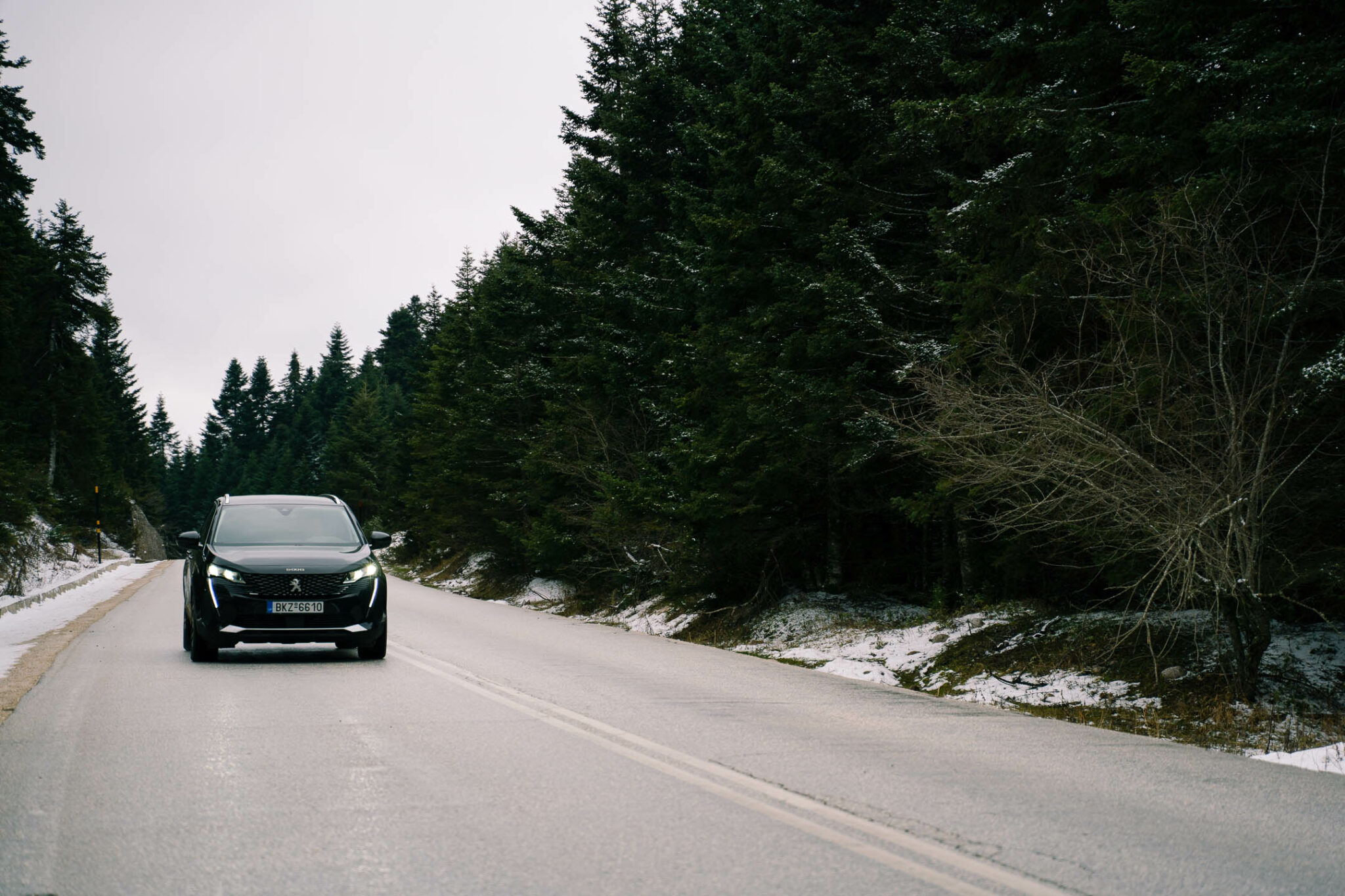
Trikala, Pyli, Elati, Pertouli, Neraidohori, Chrisomilia, Kalambaka
We decide to take a circular route, which will take us to the main points of interest, as well as some other little-known hidden gems of incredible beauty. Time to hit the road. Boasting a distinctive small sports steering wheel, a 12,3 inch digital board, high up on the dashboard, where all the information is displayed, Peugeot 5008 is, as we already mentioned, are valuable travel companion on this journey. The aviation-style switches in the centre of the console make it extremely easy to switch between options and make the journey even more comfortable. We are ready to leave Trikala behind and head to Pyli.
Almost two kilometres west of the settlement, we come across the historic stone single-arched bridge, under which the Portaikos river flows. Until 1936, this was the only passage from Thessaly to Epirus, joining the mountains of Itamos and Koziakas. It was built in 1514 by Agios Vissarion and over the centuries it has been renovated several times, while the last works were completed in 2006.
The opening of the arch reaches 29 meters and is 13 meters high. It was our first stop on a route that includes a visit to Elati, Pertouli, Neraidohori and various other villages of Aspropotamos, through which we will reach Kalambaka and Meteora and from there back to Trikala. The road network is pretty good, full of beautiful landscapes, through the forests of the area.
We head up towards the mountain range of Koziakas and reach Elati in about 20 minutes. Here, at an altitude of 950 meters, the cold is more intense. The old name of the settlement was Tyrna, and the current, almost 350 permanent residents are mainly engaged in animal husbandry, logging and some of them in tourism, as it is one of the most developed villages of the region. We take a stroll to the kiosks selling local products and to the settlement with its stone houses and beautiful courtyards.
As we go further uphill, we notice that the temperature drops further, while the first snow appears to the left and right of the road. We drive in the Peugeot 5008 on the road that passes through the fir forest of Pertouli, which is characterized as a university forest, covers an area of 8,154 acres and has been under the jurisdiction of the Aristotle University of Thessaloniki since 1934. We arrive at Pertouliotika Livadia (meaning the grasslands of Pertouli), at 1300 meters altitude, where the ski centre is located and one can enjoy hiking, or during the snow season, skiing.
Shortly after the ski centre, at an intersection leading right to Chrisomilia, we choose to turn left to enter Pertouli, which is now dressed in snow. We enjoy the view of the settlement, as well as the route to Neraidohori. We turn onto a dirt road. Huge logs are lying on the right and left of the dirt road waiting to be transported. As we said earlier, several residents are involved in logging here, holding special permits and knowing what they can and cannot cut.
We turn back and at the intersection after Pertouli and we head towards Chrisomilia. We want to follow a circular route, which will bring us back to Trikala, passing through Kalambaka this time. The road is still framed by gorgeous landscapes. Amalia syncs the drone to follow us as we move through this enchanting forest. At some point we lose contact and just when we think we’ve lost it forever, the drone returns to its original position. However, the photos it has already taken are truly stunning. The road passes through Chrisomilia, an amphitheatrically built settlement with few inhabitants, whose old name, until 1928, was Pano Perliago, meaning Pano Panagia (Virgin Mary). The village is surrounded by fir, chestnut and cedar trees. From Pertouli to here is 11 km, but the landscape is so unique that we stop every now and then. We pass by the settlement of Ambelia, reaching the plain and Mourgani. From here, following the signs, we reach Kalambaka very easily.
The pleasure of driving a Peugeot 5008
We chose the Peugeot 5008 for our tour, which may have been enhanced, but – in essence- is still one of the most attractive 7-seater premium cars on the market. It stands out for its dynamic design, innovative and sophisticated i-Cockpit, economical engines and extensive equipment.
The functionality of the 5008 is on another level. It can also be described as a large family’s joy (and more). What’s impressive is that despite the model’s relatively compact exterior, the interior can accommodate up to seven passengers. Under the bonnet lies a solid value, which goes by the name of 1.5 BlueHDi 130. A 4-cylinder diesel engine with 130 PS and 300 Nm of torque powers the big “lion”, while the eight-speed automatic transmission (EAT8) is comfortable and in keeping with the car’s character. A family SUV like this needs to be comfortable during the journey. The French have the expertise in this field, so it’s only natural that they applied it to the updated 5008 in the best possible way. Our tour continues towards the village of Gavros with the best possible companion.
Gavros, or the little-known Meteora
Just four kilometres from the Hassia mountain range lies the village of Gavros. We pass the square with the school and continue towards the hill. We see the foundations of a castle, which we are told belongs to the Hellenistic era. With George Kourelis’ guidance, however, we are off to see something that’s truly breathtaking. It is an unknown aspect of this place, which may have been overlooked due to its proximity to Meteora. We are facing huge rocks, a sea of them, enveloping the settlement. Here, as Mr. Yannis Karathanasis, a member of the initiative group for the promotion of the area, informs us, the path that will start from the neighbouring settlement of Agios Dimitrios will end. “An adventure park is planned to be created near Agios Dimitrios, as well as a 7 km trail that will lead to the village. It will be the best way to enjoy the area and at the same time safely experience hiking among these unique bulks”.
The bridge of Psyrras
Our next stop is at a beautiful two-arch bridge, built in 1790 near the village of Psiloma. Leaving Gavros, we take the road to the small town of Deskati in Grevena. The bridge lies on the right side of the road, at a distance of 12 km. For years it was one of the connection points of Epirus and Thessaly with Macedonia and was used by caravans from the Balkans to central and southern Greece.
In a clearing a little further on, we meet Jenny Zahou and Vassilis Tsiantikos, VisitMeteora’s partners, who are particularly involved in cycling. They run the Meteora e-bike and organise cycling tours to beautiful places. “Everyone can join in, regardless of fitness level. In addition to conventional bikes, we also have electric bikes, so everyone can enjoy nature and the rustling sound of leaves,” says Vassilis, who along with Jenny have been out cycling.
Outdoor activities
This is the ideal place for a range of activities such as climbing, hiking, via ferrata, cycling, but also gastronomic experiences based on local products. Paths are a key element of the experience, as many of them were used in the past by the monks themselves to transport their goods to and from the monasteries. VisitMeteora gives plenty of options so you can enjoy the area as much as possible.
A journey ends and tonight will find us in Kalambaka, walking the streets of a city that has to compete with the sublime. Bon voyage to anyone who chooses to make this day trip, or even part of it.




